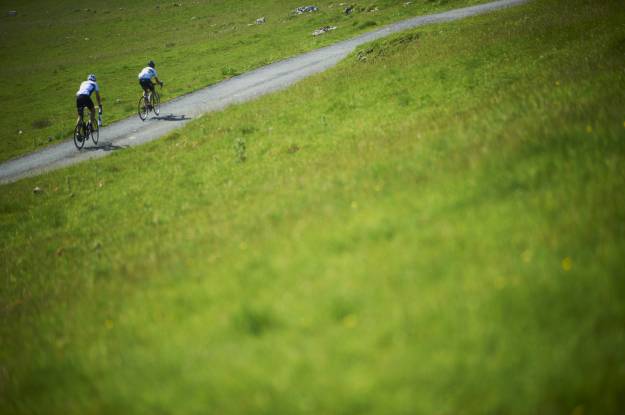Get Into Cycling - Commuting
| | | |
Getting on your bike and riding to work should be as easy as getting in your car and doing the same. In reality, if you do it right, biking to work should be even easier.
In the boom days of car ownership, back when the roads were relatively clear, the car was touted as the king of convenience, the no-fuss door to door solution (cue twee 50s ad with well turned out family enjoying wind-in-the-hair-drive on an open country road).
Things have changed. Road building cannot keep pace with congestion, increased car ownership and increased desire to drive. Fuel prices continue to rise exponentially as average car commuting speeds continue to fall.
At the same time, the effects of a century of sedentary transport are beginning to hit public health hard. Increasing levels of obesity, type 2 diabetes and cardio-vascular disease, whilst not solely attributable to car ownership, are certainly not helped by the world’s love affair with the car.

However, the tide appears to be turning. In more and more towns and cities in the developed world, cycling is once more being championed as one answer to a whole raft of social, environmental and public health problems.
It almost seemed too obvious. A simple machine invented over 100 years ago can at once liberate congested cities, restore independence, promote good health, engender social responsibility and even help repair the fragile net of social cohesion, so badly damaged by the alienation and dehumanising effects of motorised transport.
The facts and figures often touted by bike activists never fail to astonish. A bike sips fuel (in the form of your favourite food!) at a miserly rate compared to the average car. You can park 12 bikes in the space it takes to park 1 car. Regular cyclists enjoy the health of someone 10 years younger. They take less time off work with illness and stress. They have been found to be more energetic and productive when they get to work. Regular cyclists enjoy better sleep. A commuter cyclist riding at an easy 12mph average commuting pace will burn around 550 calories on a 30 minutes twice a day commute. The bike becomes your mode of transport, stress buster and gym membership all rolled into one.

But what about coping with bad weather, bad roads and bad drivers. Isn’t riding your bike in the city dangerous? Compare the 113 cyclist deaths per year to the 85,000 plus that die every year of diseases related to sedentary living, and suddenly you’ll have some perspective.
Still with us? So you’re sold on the benefits and you’re wondering, “OK, how to I get started?” Over the next few articles we’re going to look at a bike commuting philosophy that is all about seamlessly integrating cycling into your daily life. This approach may be a culture shock to the regular sporty or fitness cyclist. It’s not about lycra, heart rate monitors or power bars. It’s about equipping you and your bike in a way that lets you make a seamless transition from bike-to-work-to-leisure-to-bike. Some of you ain’t gonna like it, but if bike commuting is to become normalised in the UK, as it is the forward thinking, progressive cities of Northern Europe, it’s an approach that we owe it to ourselves, as cyclists, to try.
The concept revolves around a few key premises:
Home | Bike | Clothing | Commuting Tips | Travel and Commuting News









